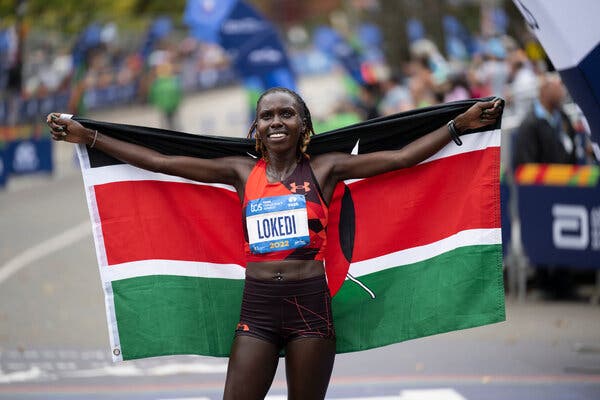Let Your Mind Run by Deena Kastor – Book Summary
Let Your Mind Run: A Memoir of Thinking My Way to Victory by Olympic medalist Deena Kastor is more than a running story. It’s a powerful look at how mindset can transform performance, not only in athletics but also in life. Through personal stories, mental strategies, and deep reflection, Kastor shows how thoughts shape results—and how anyone can grow stronger by changing the way they think.
Who May Benefit from the Book
- Athletes seeking mental techniques to improve training and performance
- Coaches and trainers looking to help their athletes build inner resilience
- Readers facing setbacks who need motivation to keep going
- Fans of memoirs that blend personal growth with high achievement
- Anyone interested in mindset and how thoughts influence real-world outcomes
Top 3 Key Insights
- Positive thinking improves both energy and performance.
- Gratitude and joy are essential tools for building resilience.
- A growth mindset turns injuries and setbacks into learning opportunities.
4 More Lessons and Takeaways
- Visualization boosts performance: Deena practiced visualizing races in detail to stay confident and focused under pressure.
- Mental training is as vital as physical: Success depends on mindset, daily habits, and emotional awareness—not just workouts.
- Support systems matter: Coaches, family, teammates, and specialists all played a key role in Kastor’s success.
- Mindfulness brings clarity: Staying in the moment helped her manage races, pace better, and overcome pain without panic.
The Book in 1 Sentence
Deena Kastor shows how a positive mindset, strategic thinking, and inner strength helped her turn struggles into Olympic success.
The Book Summary in 1 Minute
Deena Kastor’s memoir Let Your Mind Run tells the story of how changing her thoughts changed her life. Once a talented but frustrated runner, she discovered that shifting from negative to positive thinking could unleash new energy and better results. She shares how gratitude, visualization, and mindfulness transformed her running career and helped her overcome injuries and mental blocks. With each chapter, readers see how a resilient mindset, a strong support system, and joy in the process—not just in winning—are key to long-term success. Whether you’re an athlete or just chasing personal goals, her story teaches that mental strength is trainable and powerful.
The Book Summary in 7 Minutes
Deena Kastor’s memoir Let Your Mind Run is a compelling journey of how she rewired her mind to become a champion. It blends stories of her running career with practical lessons about mental strength, purpose, and positivity. The book explores how athletes—and anyone—can transform performance through mindset.
From Negativity to Positivity
Early in her career, Kastor struggled with self-doubt and negative self-talk. Despite her physical talent, her mental outlook held her back. That changed when she began working with Coach Joe Vigil, who introduced her to the concept of positive thinking.
She started to catch negative thoughts during runs and actively replace them with positive ones. For example:
| Negative Thought | Positive Replacement |
|---|---|
| “I’m so tired” | “I’m building endurance” |
| “This hill is brutal” | “This hill is making me stronger” |
| “I can’t keep this pace” | “I’m pushing my limits” |
This mental shift helped her perform better, feel lighter, and enjoy running more.
Gratitude and Joy as Performance Tools
Kastor began a daily gratitude practice. She made lists of things she appreciated—her coach, the weather, her body, even tough workouts. Gratitude gave her a mental boost and softened the stress of competition.
She also added joy into training:
- Running to her favorite songs
- Wearing fun running gear
- Smiling during workouts
- Celebrating little wins
These simple pleasures helped her stay consistent and motivated over time.
Growth Mindset in Action
One major turning point was embracing a growth mindset. Instead of fearing failure, she started to see challenges and injuries as chances to learn and grow.
This helped her:
- Seek feedback from coaches
- Set personal goals beyond winning
- View poor races as data, not defeat
When injured, she stayed mentally strong by cross-training, learning from others, and focusing on what she could control.
Visualization and Affirmations
Kastor used visualization before races to mentally rehearse success. She’d imagine every detail—her start, pace, finish, and how she would feel at each stage.
She also used affirmations like “I am the national champion,” written on sticky notes around her house. These tools rewired her brain to expect success and stay calm during pressure moments.
Physical and Mental Training Work Together
Coach Vigil’s training philosophy emphasized the whole person. Deena learned that being a strong runner meant being a balanced human.
She combined:
- Physical workouts (mileage, strength, recovery)
- Mental habits (gratitude, visualization, self-talk)
- Lifestyle factors (sleep, nutrition, rest days)
She also learned that character traits like optimism, discipline, and self-respect impacted how she trained and competed.
Relying on a Support System
Kastor credits her success to many people. Her coach believed in her, teammates inspired her, and family supported her through tough times.
Her team also included:
- Sports psychologists
- Physiotherapists
- Nutritionists
Each played a unique role in helping her improve both physically and mentally. Trusting and learning from others became one of her greatest strengths.
Adapting to Setbacks
Injuries are part of every athlete’s journey. Kastor didn’t see them as dead ends. Instead, she adapted. If she couldn’t run, she swam. If she couldn’t train hard, she focused on rest and reflection.
She adjusted mentally, too. Instead of pity, she focused on:
- Gratitude for her past races
- New strategies to recover
- Goals that went beyond short-term results
This flexible mindset made her more resilient and focused.
Mindfulness in Competition
Staying in the present became key during races. Deena learned to listen to her body without overreacting. She stayed aware of competitors but didn’t obsess over them.
Her focus during races included:
- Repeating calming mantras
- Breaking races into small segments
- Staying grounded in her breath and rhythm
Mindfulness helped her handle pressure and make smart decisions mid-race.
A Life of Learning and Purpose
Kastor kept growing. She read books, talked to experts, and reflected on her training logs. She adjusted her goals from winning races to improving her inner game.
Eventually, she found joy not just in medals, but in:
- Inspiring others
- Learning more about her body and mind
- Mentoring younger athletes
That deeper purpose helped her stay passionate long after others retired.
About the Author
Deena Kastor is an Olympic bronze medalist and multiple-time American record holder in distance running. She has won major marathons, including the Chicago and London Marathons. Known for her fierce competitiveness and thoughtful mindset, she transformed American women’s distance running. Outside competition, Kastor promotes mental training, health, and community engagement in sports. She lives in California and remains a beloved figure in the running world.
How to Get the Best of the Book
Read it slowly and reflectively. Pause after each chapter and think about how the mindset tools apply to your own challenges. Try keeping a gratitude list or using a few affirmations during your own training—or in daily life.
Conclusion
Let Your Mind Run is not just a running memoir. It’s a guide to building mental strength, staying positive through hardship, and finding lasting motivation. Whether you’re chasing a personal record or a personal dream, Deena Kastor’s story will help you think your way to victory.





